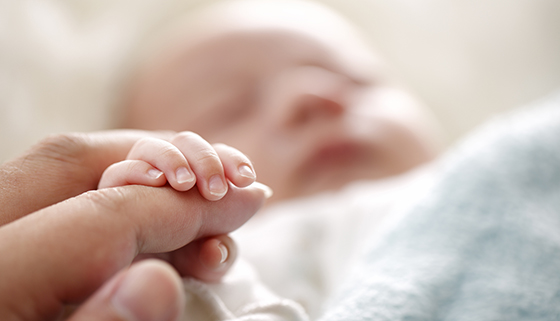In a new study published in the May 8 New England Journal of Medicine, researchers point to a random mutation in a single gene after conception as the cause of port-wine birthmarks and Sturge-Weber syndrome (SWS).
“This is a complete game-changer for those with Sturge-Weber syndrome and the millions born with port-wine birthmarks,” said co-senior study author, Anne Comi, MD, director of the Kennedy Krieger Institute’s Hunter Nelson Sturge-Weber Center, in a news release.
“Now that we know the underlying genetic mutation responsible for both conditions, we’re hopeful that we can move quickly towards targeted therapies, offering families the promise of new treatments for the first time,” added Comi.
According to the Kennedy Krieger Institute news release, SWS affects approximately one in 20,000 births, while port-wine birthmarks affect approximately one million people in the U.S.
Sturge-Weber syndrome is a serious neurological disorder associated with port-wine birthmarks on the face, glaucoma, seizures, intellectual impairment and weakness on one or both sides of the body. Port-wine birthmarks are caused by abnormally dilated capillaries in the skin which produce reddish to purplish discoloration. While port-wine birthmarks are associated with SWS, they also occur in otherwise healthy people.
Until recently, researchers did not have the technology to investigate the genetic cause of conditions like SWS. Genome studies, however, have provided scientists with the tools to investigate the origins of such rare disorders.
“This study presents a turning point for research on Sturge-Weber syndrome and port-wine birthmarks,” said Jonathan Pevsner, PhD, director of Bioinformatics at Kennedy Krieger Institute and co-senior study author, in the news release. “While we suspected that somatic mutation was the cause for decades now, the technology to test the theory did not exist. The advancement in whole genome sequencing and the development of next-generation sequencing tools finally allowed my lab to test and prove the hypothesis.”
To prove their theory that the mutation was somatic — a change in DNA that occurs after conception — researchers performed whole genome sequencing on affected and unaffected tissue and blood samples of three individuals with SWS. They were able to pinpoint one somatic mutation shared by all three affected samples — a transition in the GNAQ gene.
Confirming their findings, the scientists found the mutation in 23 out of 26 tissue samples from subjects with SWS and 12 out of 13 samples from subjects with isolated port-wine birthmarks.
The findings have two-fold significance. The discovery of the mutated gene provides researchers with the clues they need to begin to investigate drugs that affect the cellular signals that trigger the mutation. In addition, it relieves parents of the guilt that their genetics contributed to their child’s condition.
“When a child receives a diagnosis of Sturge-Weber, parents are often filled with questions about whether they passed down the condition to their child,” said Comi in the Kennedy Krieger Institute news release. “Now we can definitely put those fears to rest.”








